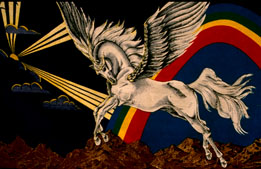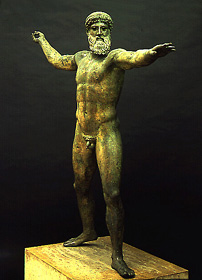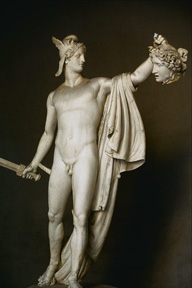Click on image for full size
Image courtesy of Corel corporation.
Pegasus
Pegasus was a winged horse created by the sea god Poseidon and the Gorgon Medusa. The Gorgon Medusa was once a beautiful Lybian princess. Because she was seduced by the sea god Poseidon in the temple consecrated to Athena, Athena transformed her into a monster. She also had hair of serpents and anyone who looked at her face was turned into stone.Perseus, an ancient Greek hero, was sent on a mission to fetch Medusa's head. Having learned Perseus'mission, Athena offered him a magical mirror in which he could see the reflected image of Medusa. He could now avoid being turned to stone. Hermes gave him a pair of winged sandals that enabled him to fly and the helmet of Hades that made him invisible.
With these wonderful weapons, Perseus reached Medusa while she was asleep and decapitated her. From her neck sprang out the warrior Chrysaor and the winged horse Pegasus who had been conceived by Poseidon's seed before Medusa's body was transformed. After his birth, Pegasus lived on the Mount Helicon until he was tamed by Bellerophon. Bellerophon believed he could fly with Pegasus to Olympus, where the gods lived.
When Zeus learned about his intentions, he sent a horsefly to bite Pegasus. Bellerophon lost control of his horse and fell back to the Earth in a
bramble bush. His sudden fall made him blind and lame. Pegasus continued to fly and reached Olympus, where
Zeus received him. Since then, Pegasus transports for Zeus
the thunderbolts forged by the Cyclopes. For his precious help, Pegasus was
immortalized in the night sky by Zeus in the constellation bearing his name.










